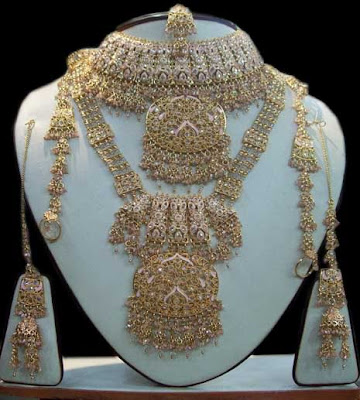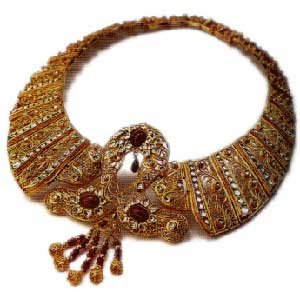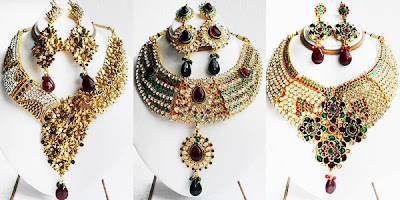Latest Fashion Bridal Jewellery Trend 2012, Jewelry for bride is very important element. On the day of marriage, bridal wants to look her best glare. ...
Bridal jewelry
Bridal jewelry
Bridal jewelry
Bridal jewelry
Bridal jewelry
Bridal jewelry
Bridal jewelry
Bridal jewelry
Bridal jewelry
Bridal jewelry
Bridal jewelry
Bridal jewelry
Bridal jewelry
Bridal jewelry
Bridal jewelry
Bridal jewelry
Bridal jewelry
Bridal jewelry
Bridal jewelry
Bridal jewelry
Bridal jewelry
Bridal jewelry
Bridal jewelry
Bridal jewelry
Bridal jewelry
Bridal jewelry
Bridal jewelry
Bridal jewelry
Bridal jewelry
Bridal jewelry
Bridal jewelry
Bridal jewelry
Bridal jewelry
Bridal jewelry
Bridal jewelry
Bridal jewelry
Bridal jewelry
Bridal jewelry
Bridal jewelry
Bridal jewelry
Bridal jewelry
Bridal jewelry
Bridal jewelry
Bridal jewelry
Bridal jewelry
Bridal jewelry
Bridal jewelry
Bridal jewelry
Bridal jewelry
Bridal jewelry
Pakistani bride selects a perfect wedding dress and jewelry to look attractive. She will remember this for the rest of her life.
The history of Jewellery
The word Jewellery is derived from the Latin word jocale, meaning "plaything," and the word jewel, which was anglicised in the 13th century from the Old French word jouel. The word jewellery is used to describe any piece of precious material (gemstones, noble metals, etc.) used to adorn one's self.
Jewellery in its most basic form has been used since man began using tools and clothing. It is one of the oldest decorative arts. Its importance through the ages is linked to the deep human love for intrinsically beautiful objects, to the wish to for bodily beautification and to acknowledge superstition and symbolism.
Many authorities had believed that the ability to use symbolism did not develop until humans had migrated to Europe 35,000 to 40,000 years ago. However, discoveries have been made of mollusk shells that had been perforated to form beads. These beads, which date back to the Middle Stone Age (100,000 years ago ) are now thought to be some of the oldest known man-made forms of jewellery. Other readily available natural materials used to make the first jewellery include animal teeth, bone, various types of shells, carved stone and wood.
Increasing emphasis on jewellery making began with the ancestors of Homo Sapiens, the Cro-Magnons over 40,000 years ago when they began to migrate from the Middle East to Europe.Jewellery from that period includes crudely fashioned necklaces and bracelets made of bone, teeth, mother-of-pearl, shells and stone strung together with a piece of twine or animal sinew. The earliest signs of metallurgy using copper to make jewelry was seen around 7,000 years ago.
Early civilizations used jewellery as a symbol of wealth and/or status as well as a means to protect one against harm, ward of evil, and heal ailments. Since the early beginning, jewellery has been used to adorn nearly every part of the body and has been made out of almost every material known to mankind.
The Indian sub-continent has the longest continuous legacy of jewellery making anywhere. While Western traditions of jewellery creation were interrupted by changes in ruling classes and empires, India enjoyed a continuous development of art forms for some 5000 years By 1,500 BC gold earrings and necklaces, bead necklaces and metallic bangles were created.
The first signs of established jewellery making in ancient Egypt was around 3,000-5,000 years ago. The Egyptians preferred the luxury, rarity, and workability of gold over other metals.
Greeks started using gold and gems in jewellery in 1,400 BC, although beads shaped as shells and animals were produced widely in earlier times. By 300 BC, the Greeks had mastered making jewellery and using precious stones such as amethyst, pearls and emeralds. Also, the Greeks are credited with making the first cameos. Greek artisans creating them from a striped brown pink and cream agate stone. Early Greek jewellery was often of a simpler design and workmanship than in other cultures. However, as time progressed the designs grew in complexity and a wide variety of materials were used. It is interesting that this jewellery was hardly worn in everyday life, but was mostly used for public appearances or on special occasions
In Europe during early years, jewellery work was abundantly diverse, especially among the barbarian tribes such as the Celts. When the Romans conquered most of Europe, jewellery was changed as smaller factions developed the Roman designs. The most common artefact of early Rome was the brooch, which was used to secure clothing together. The Romans used a diverse range of materials for their jewellery from extensive resources obtained from conquered lands across the continent. Although they used gold, they sometimes used bronze or bone and in earlier times, glass beads & pearls. As early as 2,000 years ago, they imported sapphires and Indian diamonds They also used emeralds and amber in their jewellery. In Roman-ruled England, fossilized wood and the stone called jet from Northern England was often carved into pieces of jewellery. The early Italians worked in crude gold and created clasps, necklaces, earrings and bracelets. They also produced larger pendants which could be filled with fragrances.
Post-Roman Europe continued to develop jewellery making skills; the Celts in particular are noted for their jewellery, which in terms of quality matched or exceeded that of Byzantium. Clothing fasteners, amulets, and to a lesser extent signate rings are the most common artefacts known to us; By the 8th century, jewelled weaponry was common for men, while other jewellery (with the exception of signet rings) seems to become the domain of women. In the late 18th century, the most significant influences on the development of European jewellery were the public’s fascination with the treasures being discovered through the birth of modern archaeology; and the fascination with Medieval and Renaissance art.
The changing social conditions and the onset of the Industrial Revolution also lead to growth of a middle class who wanted and could afford jewellery. This combined with the use of industrial processes, cheaper alloys, and stone substitutes, lead to the development of paste or costume jewellery. Distinguished goldsmiths continued to flourish, however, as wealthier patrons continued to revere rich artisan produced adornments.
Jewellery has never been as diverse as it is in the present day. The modern jewellery movement began in the late 1940s at the end of World War II with a renewed interest in artistic and leisurely pursuits. The movement is most noted for jewellery designers who advanced the concept of wearable art.
The advent of new materials such as plastics, the use of base metals and alloys as well as the use different pigmenting techniques have led to increased variety in styles. Other advances, such as the development of improved pearl harvesting and creation of improved quality artificial gemstones (such as diamonds, rubies, sapphires etc), jewellery has come within the economic grasp of a much larger segment of the population. The "jewellery as art" movement, spearheaded by artisans has kept jewellery on the leading edge of artistic design. Influence from other cultural forms is also evident; one example of this is the ”bling” style of jewellery, popularized by hip-hop and rap artists in the early 21st century. With the world's designs more accessible to jewellers, designs have blended in aspects from many different cultures from many different periods in time.
Artisan jewellery continues to grow as both a hobby and a profession. With more than 17 U.S. periodicals about beading alone, resources, accessibility and a low initial cost of entry continues to expand production of hand-made adornments. Popular because of its uniqueness, artisan jewellery can be found in just about any price range.
Ancient world jeweller
Jewellery is a universal form of adornment. Jewellery made from shells, stone and bones survives from prehistoric times. It is likely that from an early date it was worn as a protection from the dangers of life or as a mark of status or rank.
In the ancient world the discovery of how to work metals was an important stage in the development of the art of jewellery. Over time, metalworking techniques became more sophisticated and decoration more intricate.
Gold, a rare and highly valued material, was buried with the dead so as to accompany its owner into the afterlife. Much archaeological jewellery comes from tombs and hoards. Sometimes, as with the gold collars from Celtic Ireland which have been found folded in half, it appears people may have followed a ritual for the disposal of jewellery.
Renaissance jewellery
Renaissance jewels shared the age's passion for splendour. Enamels, often covering both sides of the jewel, became more elaborate and colourful. Advances in cutting techniques increased the glitter of stones.
The enormous importance of religion in everyday life could be seen in jewellery, as could earthly power - many spectacular pieces were worn as a display of political strength.
17th-century jewellery
By the mid-17th century, changes in fashion had introduced new styles of jewellery. While dark fabrics required elaborate gold jewellery, the new softer pastel shades became graceful backdrops for gemstones and pearls. Expanding global trade made gemstones ever more available. Advances in cutting techniques increased the sparkle of gemstones in candlelight.
18th-century jewellery
Sword, mark of James Morisset, 1798-9. Museum no. 274-1, 2-1869
The end of the previous century had seen the development of the brilliant-cut with its multiple facets. Diamonds sparkled as never before and came to dominate jewellery design. Frequently mounted in silver to enhance the stone's white colour, magnificent sets of diamond jewels were essential for court life. The largest were worn on the bodice, while smaller ornaments could be scattered over an outfit.
19th-century jewellery
Spray ornament, maker unknown, about 1850. Museum no. M.115-1951
The 19th century was a period of huge industrial and social change, but in jewellery design the focus was often on the past. In the first decades classical styles were popular, evoking the glories of ancient Greece and Rome. This interest in antiquities was stimulated by fresh archaeological discoveries. Goldsmiths attempted to revive ancient techniques and made jewellery that imitated, or was in the style of, archaeological jewellery.
NEXT






+of+bridal+jewelry+sets+nacklaces+earing+latest+fancy+(180).png)
+of+bridal+jewelry+sets+nacklaces+earing+latest+fancy+(64).jpg)
+of+tn_ss611.jpg)
+of+ttt.jpg)
+of+wedding-necklace-jewelry-250x250.jpg)
+of+wedding-wear-costume-fashion-designer-copper-necklace-jewelry-250x250.jpg)
+of+Traditional-Indian-Ethnic-Polki-Wedding-Jewellery-Set-520x390.jpg)
.jpg)










.jpg)




.jpg)
.jpg)
.jpg)



.jpg)











.jpg)
.jpg)
.jpg)
.jpg)
.jpg)


































.jpg)
.jpg)










.jpg)









.jpg)













No comments:
Post a Comment